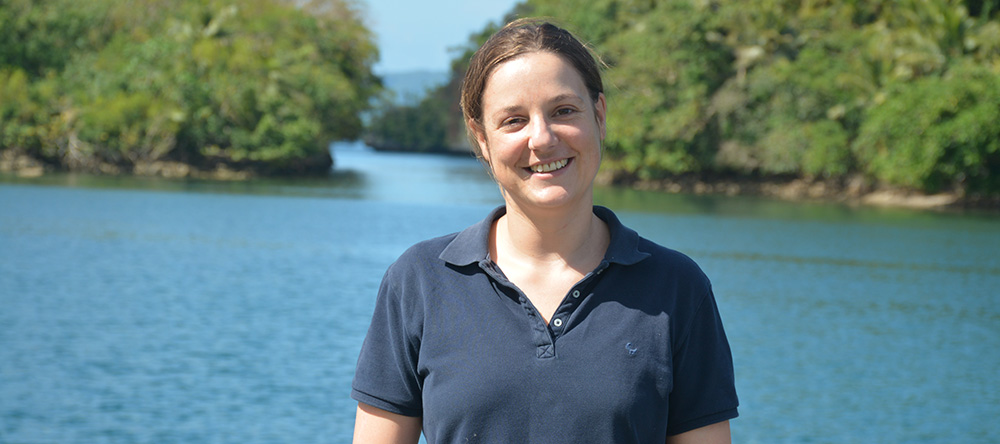- PICRC staff
Dr. Louw Claassens joins PICRC to lead its PNMS Science and Monitoring Program
Dr. Louw Claassens recently joined the Palau International Coral Reef Center (PICRC) as a Science Officer and Researcher for the Palau National Marine Sanctuary (PNMS). Her main role is to focus on offshore and deep-sea research in this large scale marine protected area (LSMPA).
She will work closely with the PNMS Working Group of the National Environmental Protection Council, PICRC researchers, and other researchers and stakeholders within Palau and internationally, to implement the PNMS Science and Monitoring Plan. Likewise, she will help facilitate and be actively involved in research in Palau that will contribute to the management of the PNMS.
Dr. Claassens completed her PhD in marine biology in 2017 from Rhodes University, South Africa, where she is still a research associate. She also received a National Geographic grant to develop an Action Recovery Plan for the Critically Endangered estuarine pipefish. This project depends on the development and use of novel approaches, such as environmental DNA (eDNA), to monitor
this rare and cryptic species. Her experience with eDNA is useful for her work with PNMS research since PICRC is collaborating with Stanford University to assess biodiversity in the PNMS using eDNA. Dr. Claassens’ research interests lie in providing the information needed to achieve effective marine conservation, particularly within heavily used and altered environments and focused on rare and cryptic species and the habitats they depend on. She is particularly interested in developing the tools and approaches needed to effectively measure system change. Dr. Claassens is a member of the IUCN SSC Seahorse, Pipefish and Seadragon Specialist Group as well as the IUCN SSC Species Monitoring Specialist Group.
In addition to learning more about the diversity within the PNMS using eDNA, Dr. Claassens, PICRC researchers and their research collaborators are investigating how fish use the nearshore and offshore environments and how Palau’s coastal areas are connected to the open ocean. They are also following the movement of large pelagic predators, to see how much time they spend within the PNMS.
Going forward, PICRC will initiate research that focus on finding out how much pelagic fish we have in Palau’s offshore environment. By using Baited Remove Underwater Cameras (BRUVs) which will be deployed in the open ocean, PICRC researchers will be able to determine the abundance and biomass of pelagic fish. Focus will be placed on all management zones within the PNMS – those open to fishing and the Sanctuary, which will help us track the impact of Palau’s conservation efforts. Research will also focus on determining the role of the PNMS as a tuna spawning and nursery area by sampling and monitoring tuna larvae in the PNMS.
Reflecting on his new position as the PNMS Science Officer and Researcher, Dr. Claassens states, “The PNMS provides so many exciting opportunities – explore Palau’s offshore and deep sea environments, lead the way in sustainable marine resource use, build a network of collaborators from all walks of life. Being able to move to Palau and work on the PNMS is such an amazing opportunity and as a scientist I am so excited to jump in and immerse myself in everything the PNMS is and can be! I hope I can look back in 10 years’ time and be able to see the tangible conservation impacts made by the PNMS for the environment and people – locally, regionally and globally.”


